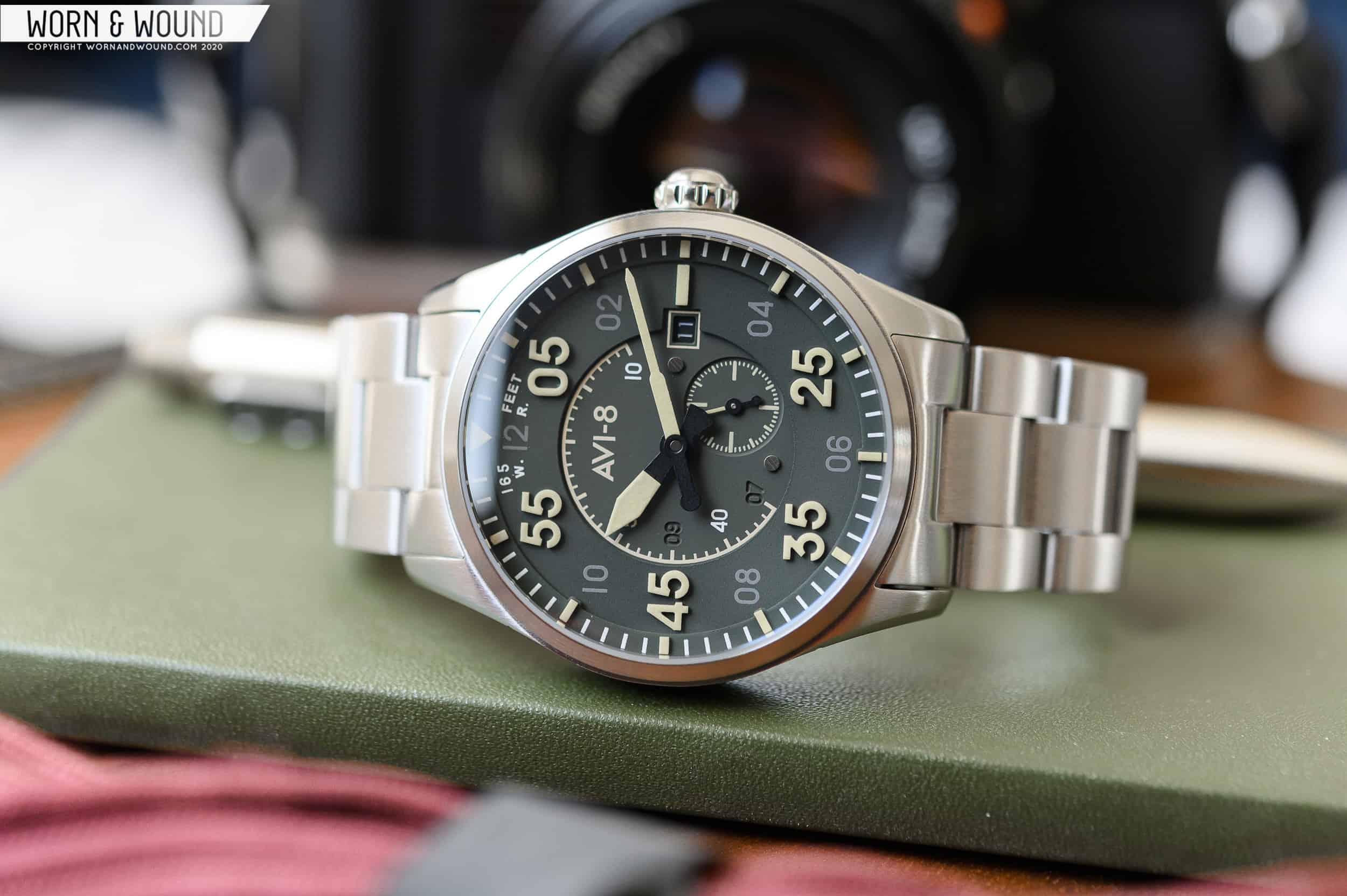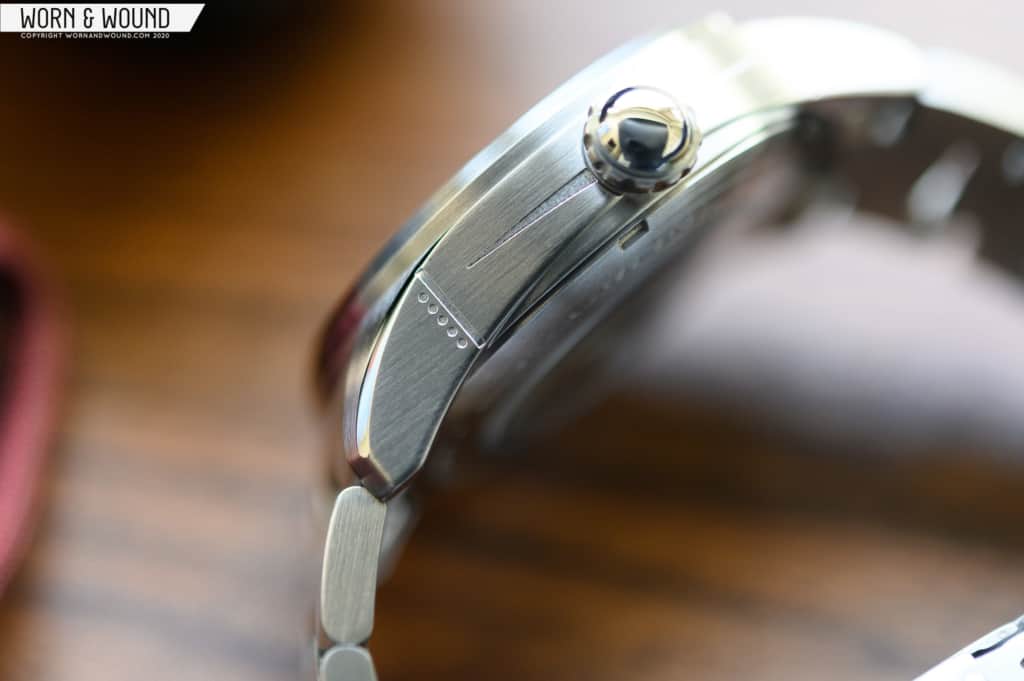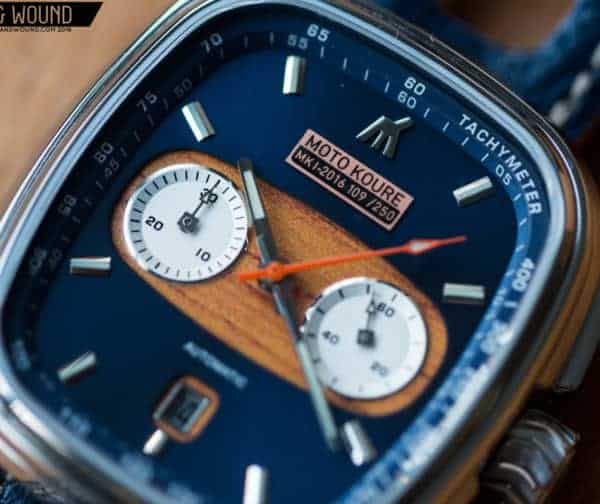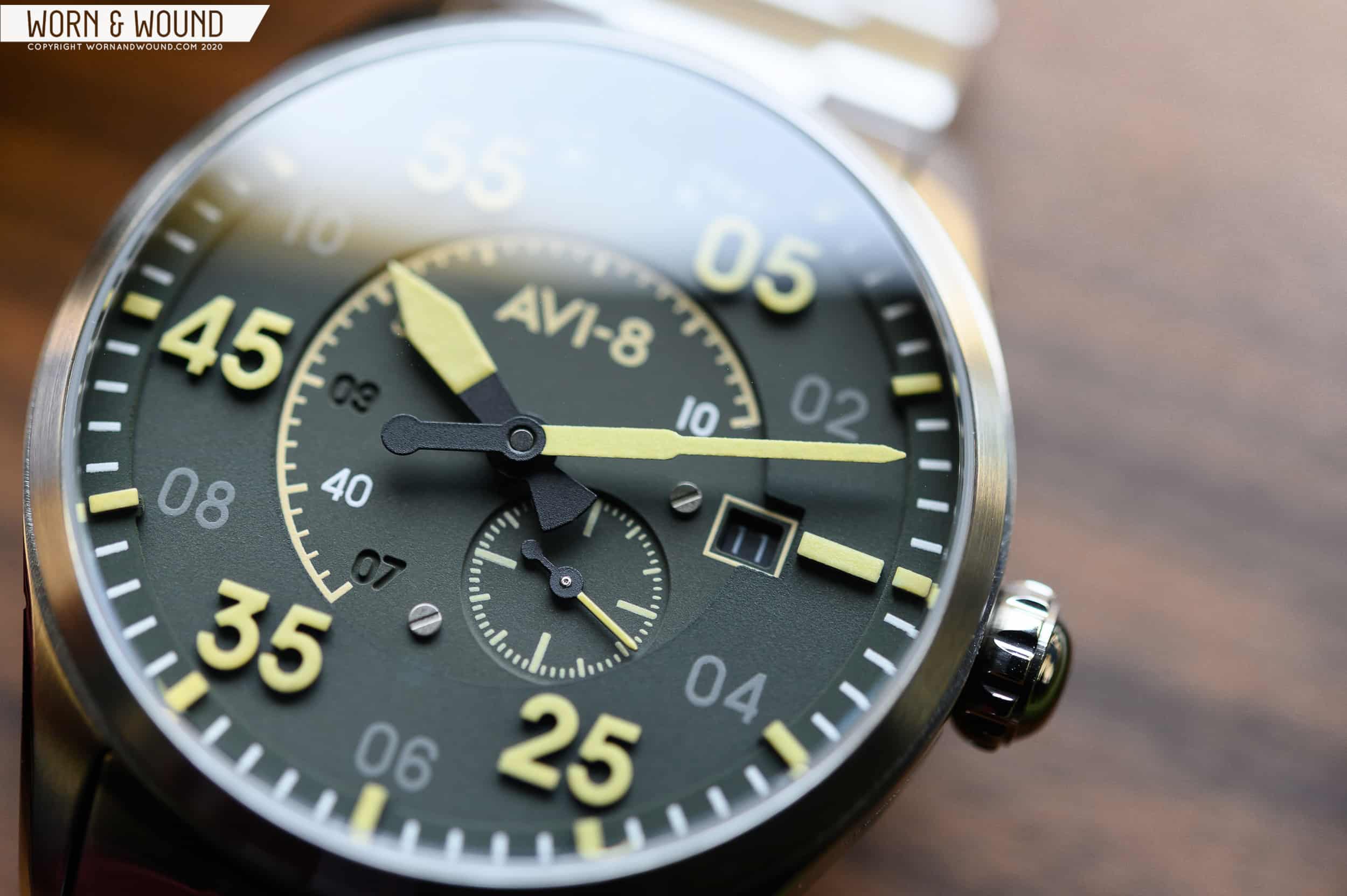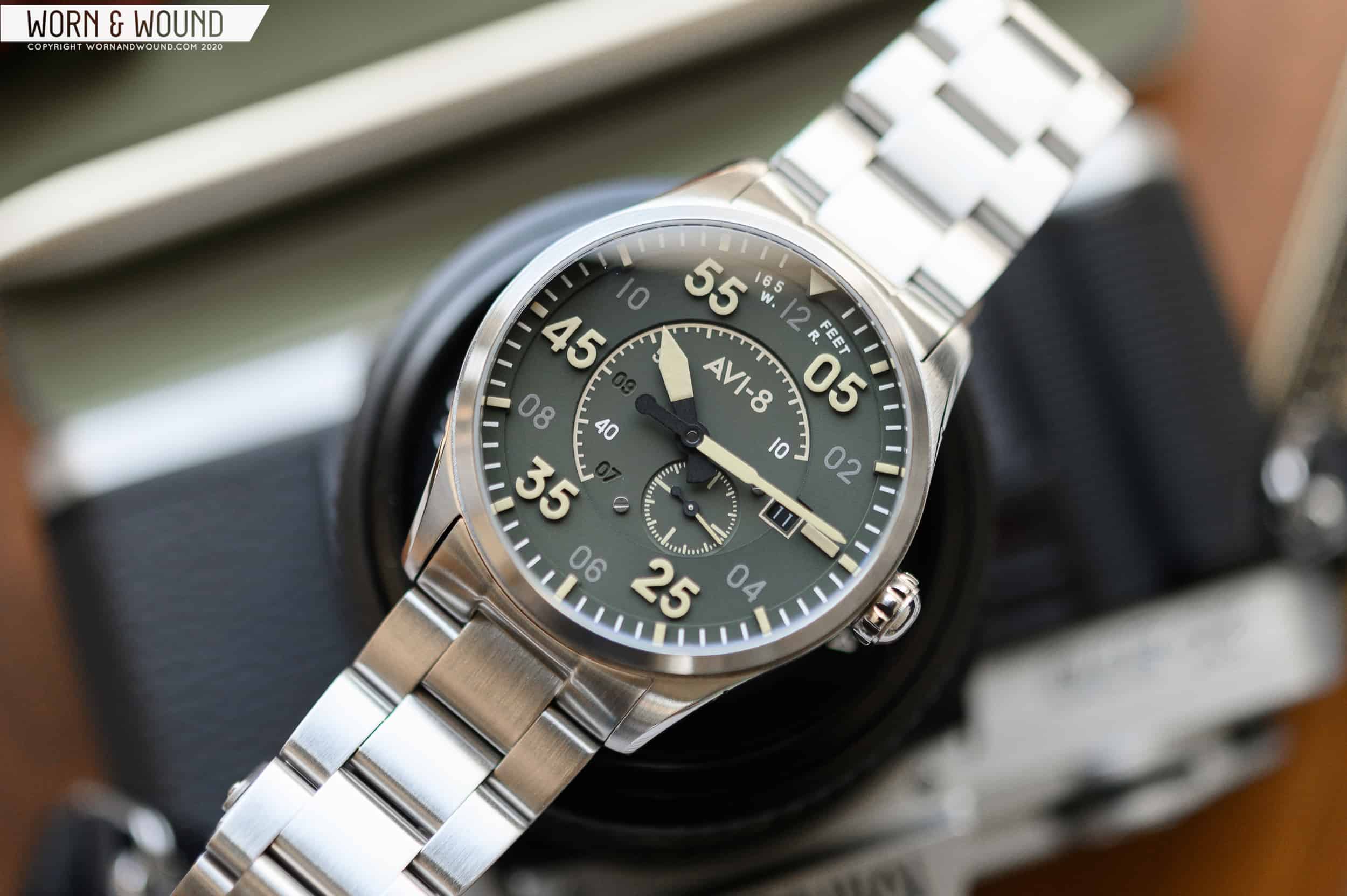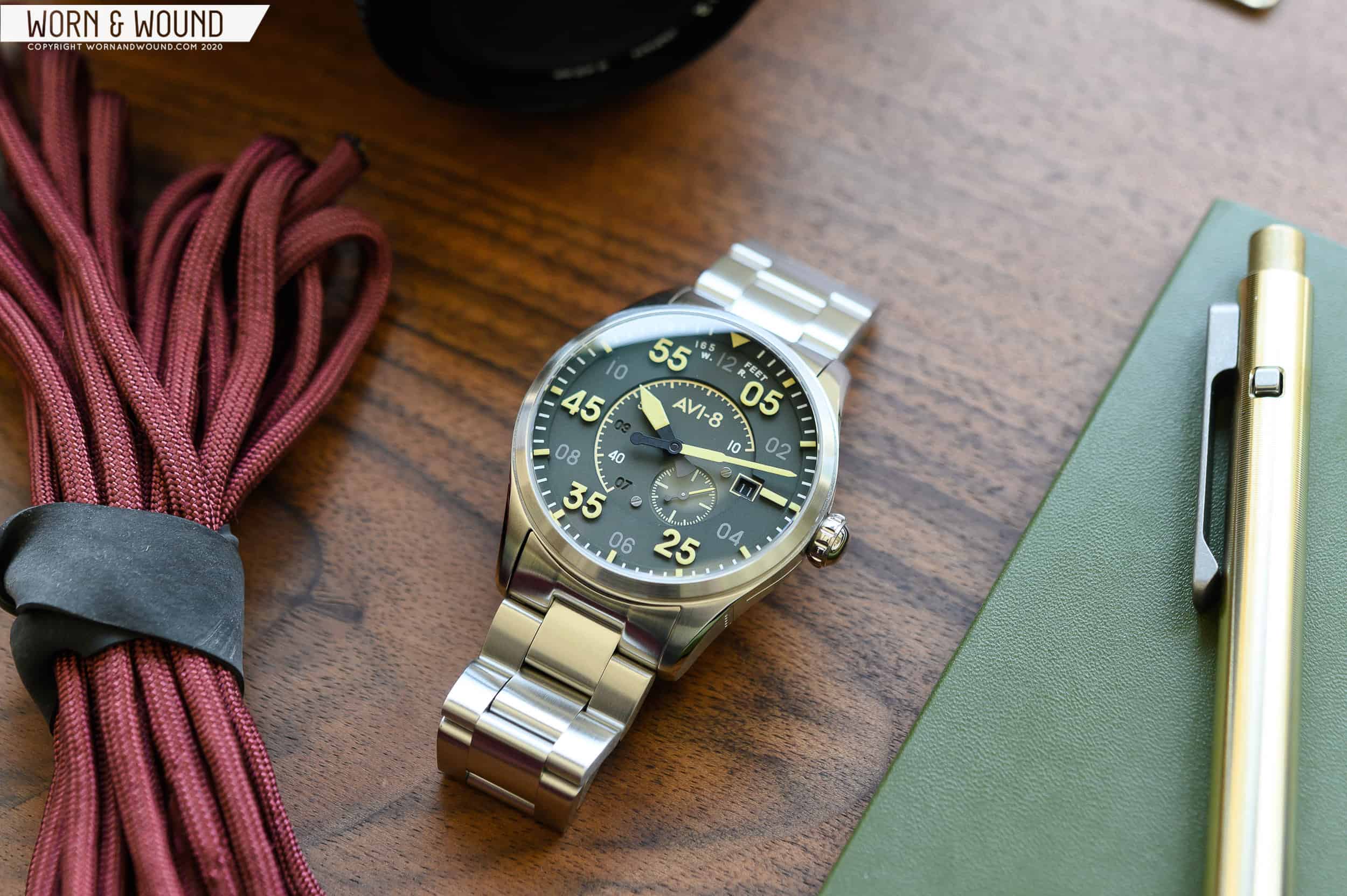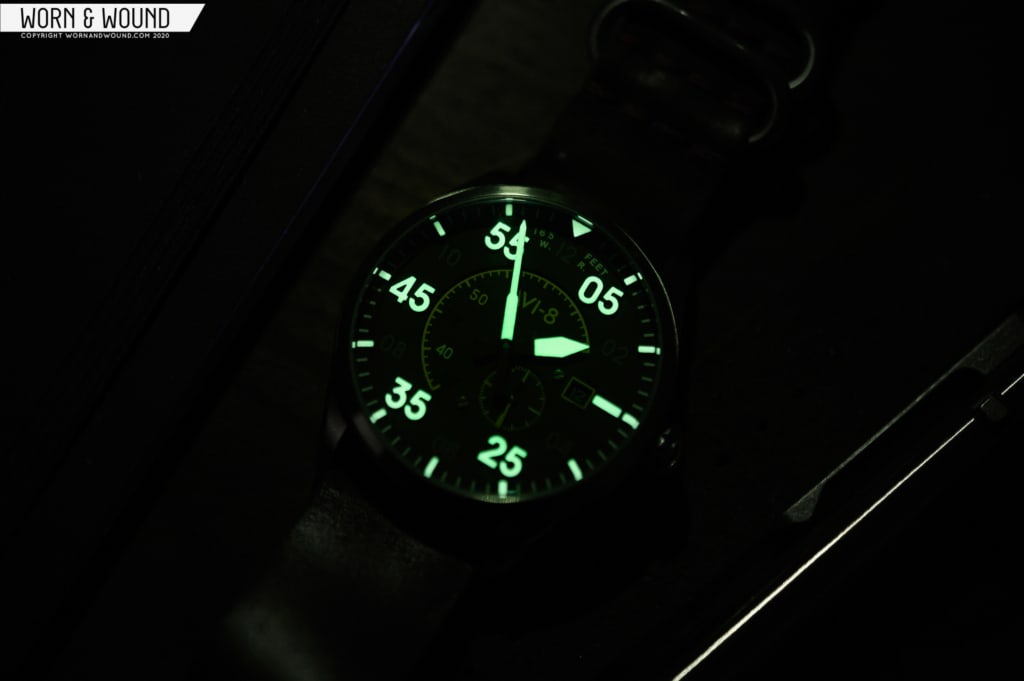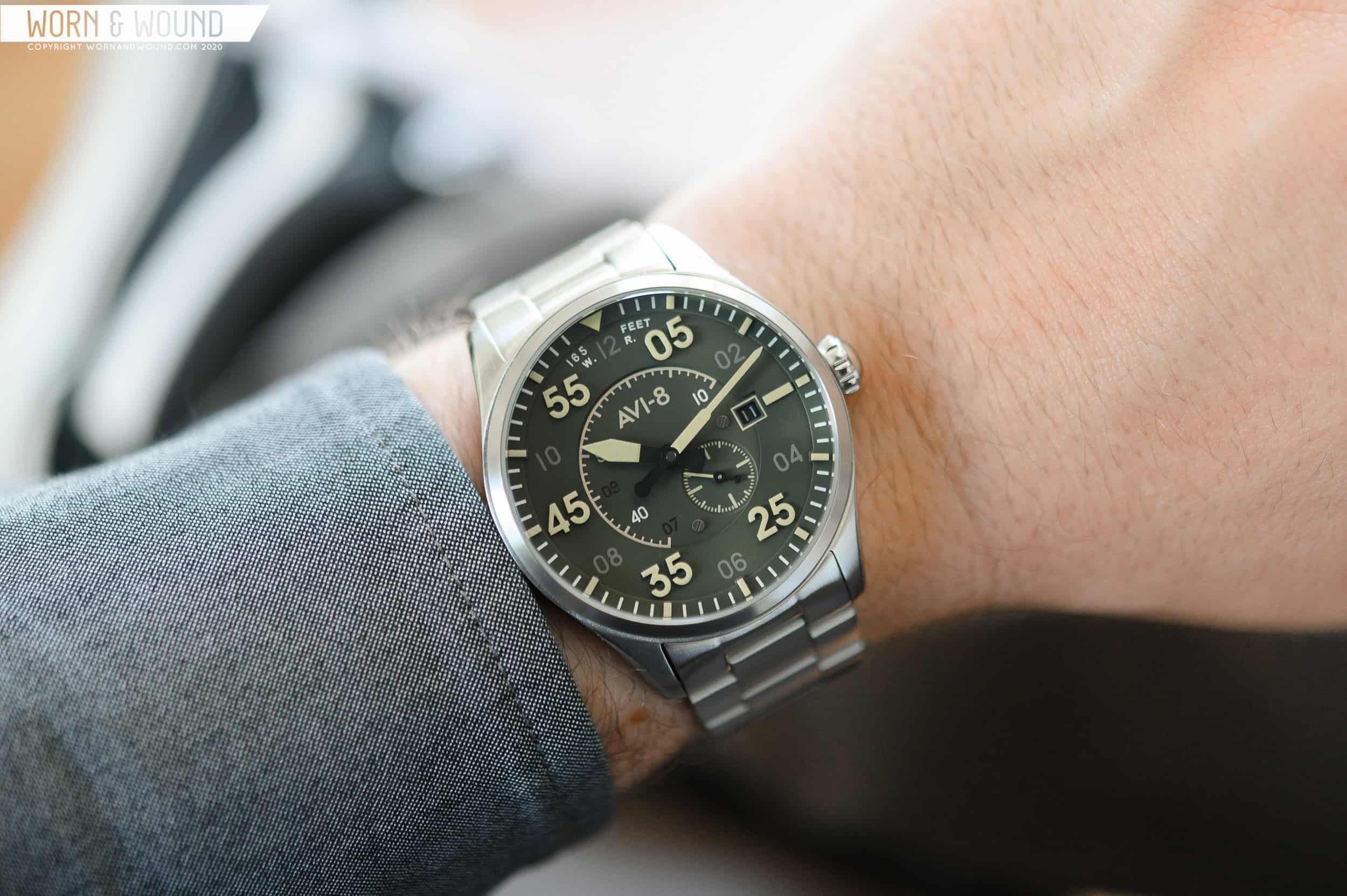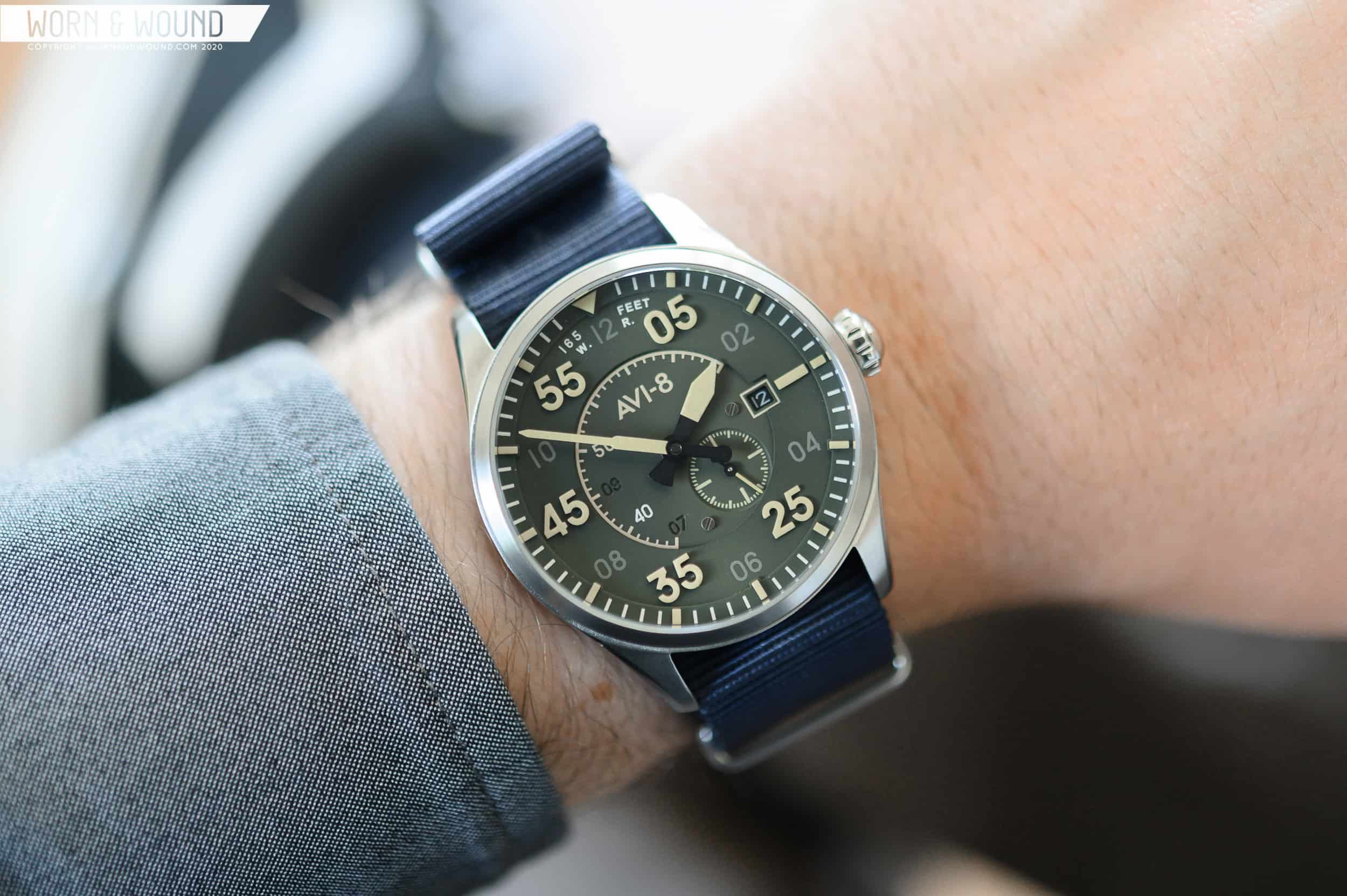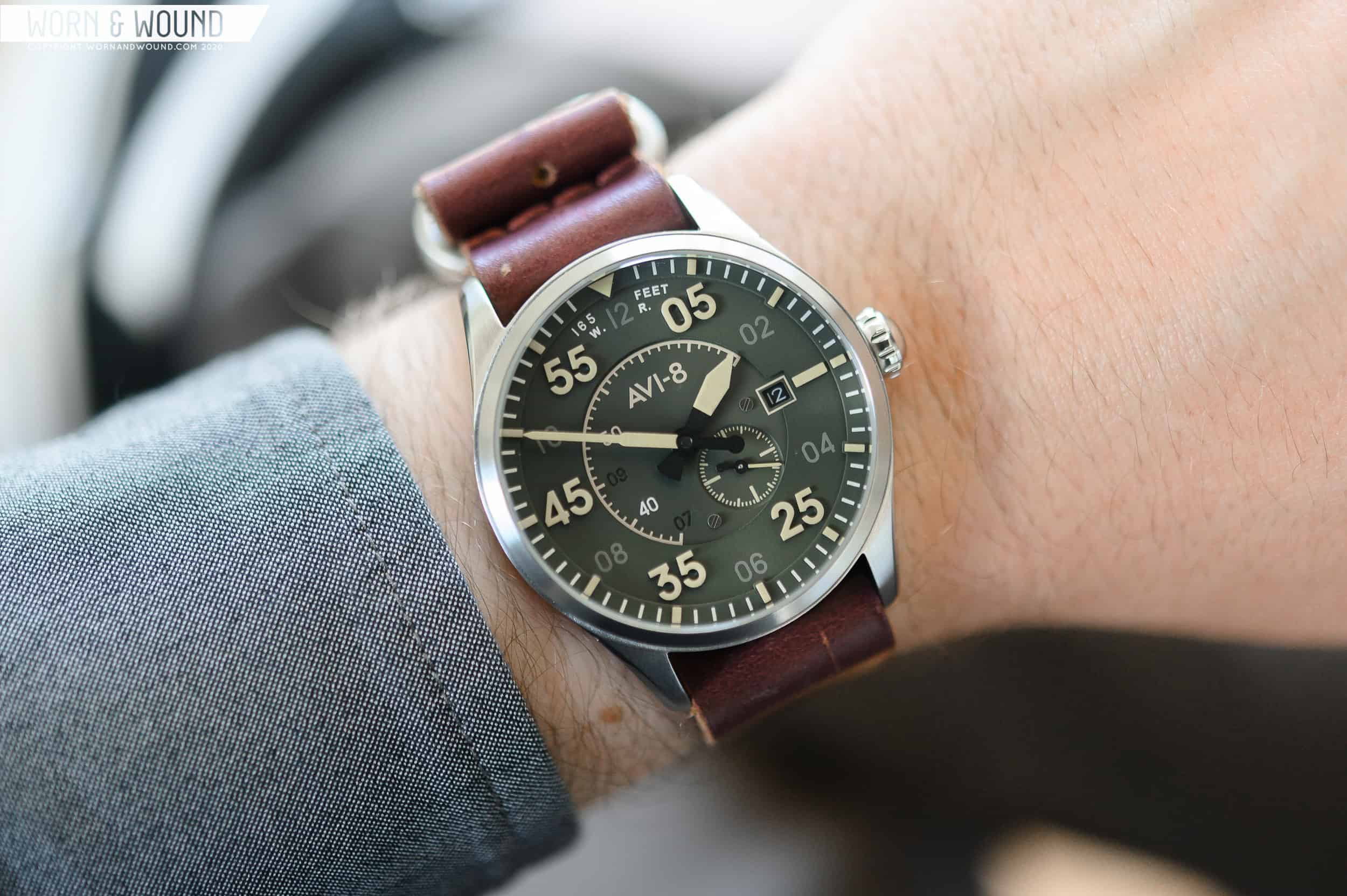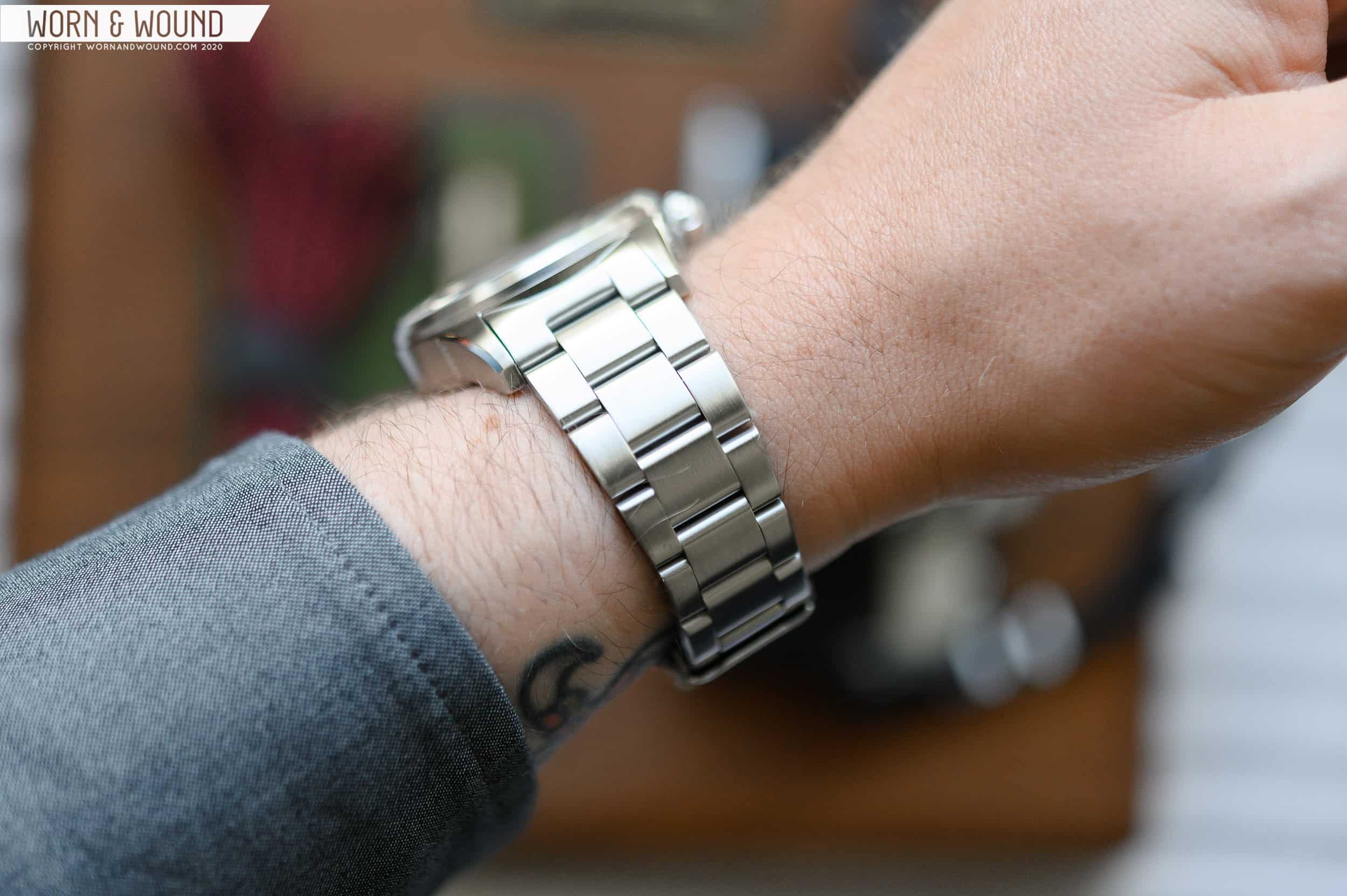Even if you’re not a hardcore aviation nerd, the Spitfire is one of the most recognizable planes in history. Featuring sleek lines, a single prop in the front, and an olive green paint job, the Spitfire is a classic. It’s no wonder that AVI-8, a brand known for its aircraft-inspired designs, turned to the Spitfire as an influence for their new design. The Spitfire Type 300 is an automatic pilot-style watch that’s 42mm wide with a unique dial that plays with depth and lume, and features subtle cues throughout the design that hint at the Spitfire aircraft. While the Type 300 won’t win any legibility awards, it’s definitely a fun watch that evokes the spirit of the warplane it’s modeled after nearly 85 years after the plane took its first flight. Let’s take a closer look at this new offering from AVI-8.
Hands-On: AVI-8 Spitfire Type 300 Automatic
Hands-On: AVI-8 Spitfire Type 300 Automatic
Case
Measuring in at 42mm wide, the stainless steel case on the Spitfire is appropriately sized for a pilot style watch. Taking the 13.6mm height into consideration, the watch is definitely on the larger side. The shape of the case is rather straightforward, but the unique finishing and design is where the Spitfire stands out. AVI-8 says that the case closely follows the curves and lines of the plane it’s modeled after, but I think that’s a bit of a stretch. That’s not to say that the watch’s shape isn’t well-designed.
From the side profile, the mid-case is one continuous curve from lug to lug, making it hug your wrist well. Since the watch has a large appearance (mostly due to the slim bezel and large dial), the curved case helps keep it comfortable to wear throughout the day. The design and decoration of the case, such as a few engraved elements on the sides of the case that mimic riveted panels, does fit in well with the aesthetic of the plane. They also help to break up what would otherwise be a rather plain mid-case and add some playfulness to the design. At 3 o’clock, you’ll find a push-in crown that’s modeled after the nosecone and propellor of the Spitfire, further adding to the aviation-themed vibe. The crown is the only polished element in the entire watch design, which is a bit odd, especially since everything else, save a polished bevel on the lugs, features the same brushed finish.
Flip the watch over, and you’ll notice a sapphire case back that gives you a glimpse of the Miyota 8218 series movement inside. While the movement itself has some Côtes de Genève visible, it’s rather utilitarian in appearance. AVI-8 did add a bit of flair, and that’s the custom-designed rotor. It’s in the shape of the Spitfire viewed from the top down and really ties together the theme of the watch while jazzing up the movement a bit.
Dial + Hands
Here’s where things get interesting. The dial on the Spitfire is a bit of a mixed bag for me. A classic pilot’s watch should be clear and legible at a quick glance, so all of your focus can remain on you know… piloting an aircraft. I’m afraid that you might need a bit more than a quick glance to make sense of the Spitfire’s dial. Let’s break it down. The dial has a lot of depth to it, which in conjunction with the domed sapphire, makes for a really appealing look. The dial is broken down into concentric circles but is by no means a sector dial. The innermost circle contains a small seconds sub-dial and an odd graduated scale between seven and 2.
At 3 o’clock, a small white-on-black date window breaks the barrier between the first and second layer. Moving outwards, there’s another circle that contains the mix of applied and printed indices, which is finally surrounded by a thinner (and slightly elevated) chapter ring — again with raised and printed indices.
The scale of the watch is a bit messy. It alternates between very large 10-minute markings rendered in yellow lume with hour markings in between. The hour markers are printed in gray and single numbers are preceded by a “0”. So the scale reads 05, 02, a hash mark in place of 3, 04, 25, 06…and so on. To make things even more confusing, the 7 to 2 scale has markings from 40 to 10. So I think what I’m saying here is that you’re probably better off just reading the position of hands as if there were no markings on the dial.
If you want pure, legible pilot watch goodness, there are plenty of other places to look and I don’t believe that the Spitfire is truly about that. There’s an element of playfulness and fun that are represented through the use of different scales and depths that make the dial on the AVI-8 just plain fun to look at. While it may have sounded like I was tearing this thing apart, I really do enjoy the avant-garde aviation-inspired design cues.
Luckily, the large handset is very easy to read and hit with a healthy application of luminous paint. For the hours hand, there’s a stubby sword-shaped hand that’s confined to the innermost circle of the dial. Minutes are taken care of by a sword-style hand that features a diagonal step down about 1/3 of the way from the center. The sub-dial has a running seconds hand that has a smaller similar hand that matches the set nicely. Lume performance is decent and glows bright green.
Movement
Inside the Spitfire is a Miyota 8218 automatic movement with a custom Spitfire rotor. The movement contains 21 jewels and ticks at a 21,600 bph rate. A full wind will keep the watch running for approximately 42 hours. There’s no hacking seconds, but the watch is windable by hand to get the movement running after a period of inactivity. The movement is made in Japan and is commonly used across many microbrands as an affordable, reliable movement. It makes sense for this movement to be used in the Spitfire, as there aren’t too many options that would keep the watch seated in its mid-$400 price range.
Strap + Wearability
AVI-8’s Spitfire ships on a brushed steel oyster style bracelet. The links are held in with a push-pin system, making them easy to swap out with a watch tool (or thumb tack). The clasp is pretty straightforward, and has a feel that lines up well with the asking price of the watch. You’ll find three micro-adjust holes on the sides to dial in your fit and a fold over safety clasp to keep it secured to your wrist. Starting at 22mm and tapering down to 18mm at the clasp, the bracelet is comfortable on the wrist. I do appreciate when watches with wider lug widths feature a tapered bracelet, as it makes the watch wear significantly better on the wrist
Toss the Spitfire on a mil-strap, and you’ve got a completely different vibe. It gives the watch more of a military look. It’ll also work well with leather (admittedly, I don’t have any 22mm leather straps on hand) for a more classic aviation vibe. The green and yellow dial lend themselves to looking sharp with a variety of different colors, but my preference would lean towards a nice gray or khaki, or a perforated deep brown leather strap.
Conclusion
The AVI-8 Spitfire enforces the idea that watches should be fun. They did an excellent job hinting at design seen on the Spitfire aircraft and carried those over well to the watch. Again, it’s not the most legible, but a watch doesn’t always have to be. It’s a tough argument to justify a mechanical watch at all (don’t you just hate defending against a “why don’t you look at your phone like a normal person”?), so you might as well have some fun with it. Both fans of aviation and military watches will enjoy this entrant into the AVI-8’s lineup. It does wear as a large 42mm watch with some serious wrist presence, but the case shape and comfortable bracelet make up for it. AVI-8









 Featured Videos
Featured Videos




